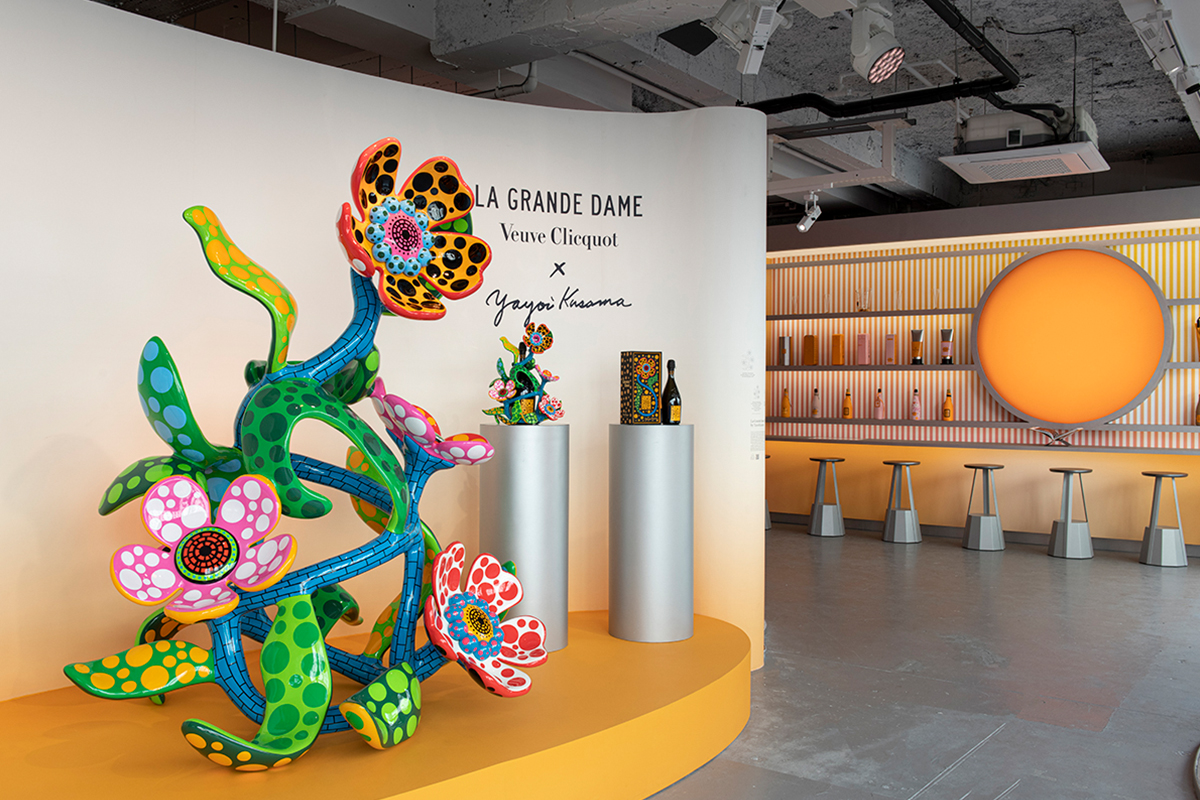
Yayoi Kusama Statue at the Veuve Clicquot Exhibition. Courtesy of Veuve Clicquot
Maison Veuve Clicquot has brought its travelling exhibition to London this May. Trudy Ross stepped out to Piccadilly Circus to interview CEO Jean-Marc Gallot amidst sunflowers, paintings, sculptures, and that iconic gleaming yellow
LUX: Queen Victoria was the first British royal to order a direct shipment of Veuve Clicquot in the 19th century. Now in 2023, with a new monarch having just been crowned, the brand still has this presence in the heart of London. Can you speak to the brand’s long history with the Royal Family?
Jean-Marc Gallot: It is a very, very, long history. I think the first shipment for the royal family was in 1868. In one of the exhibition rooms upstairs we have a menu made especially for Queen Victoria’s son, Edward the 7th Prince of Wales. He gave us the Royal Warrant in 1905, so, I would say, we have a very strong link and history with the UK.
The Maison was created in 1722, so we celebrated 250 years last year. The first shipment to the UK was in 1773, 250 years ago. So there is a long, long story between Veuve Clicquot and the UK. Out of the nine female artists we have here, two are British. We have Cece Philips and Rosie McGuinness, who have created their own portraits and interpretations of Madame Clicquot.
LUX: Throughout these 250 years, what do you think has changed about the brand and what has remained the same?
JMG: What remains today and will continue to remain, is the fact that we have an incredibly inspiring woman at the centre of our history. Madame Clicquot at her time was so courageous, determined, and audacious. She was a widow at 27 years old but her spirit, her audacity, and also this idea of being solaire, being radiant, is what remains in everything we do. It is a state of mind. Everyone from myself, the CEO, to my team, to everyone you will see here today from Maison Veuve Clicquot, works with this state of mind. I think it’s super important to have this spirit of being solaire, audacious and always surprising people. That is not going to change.
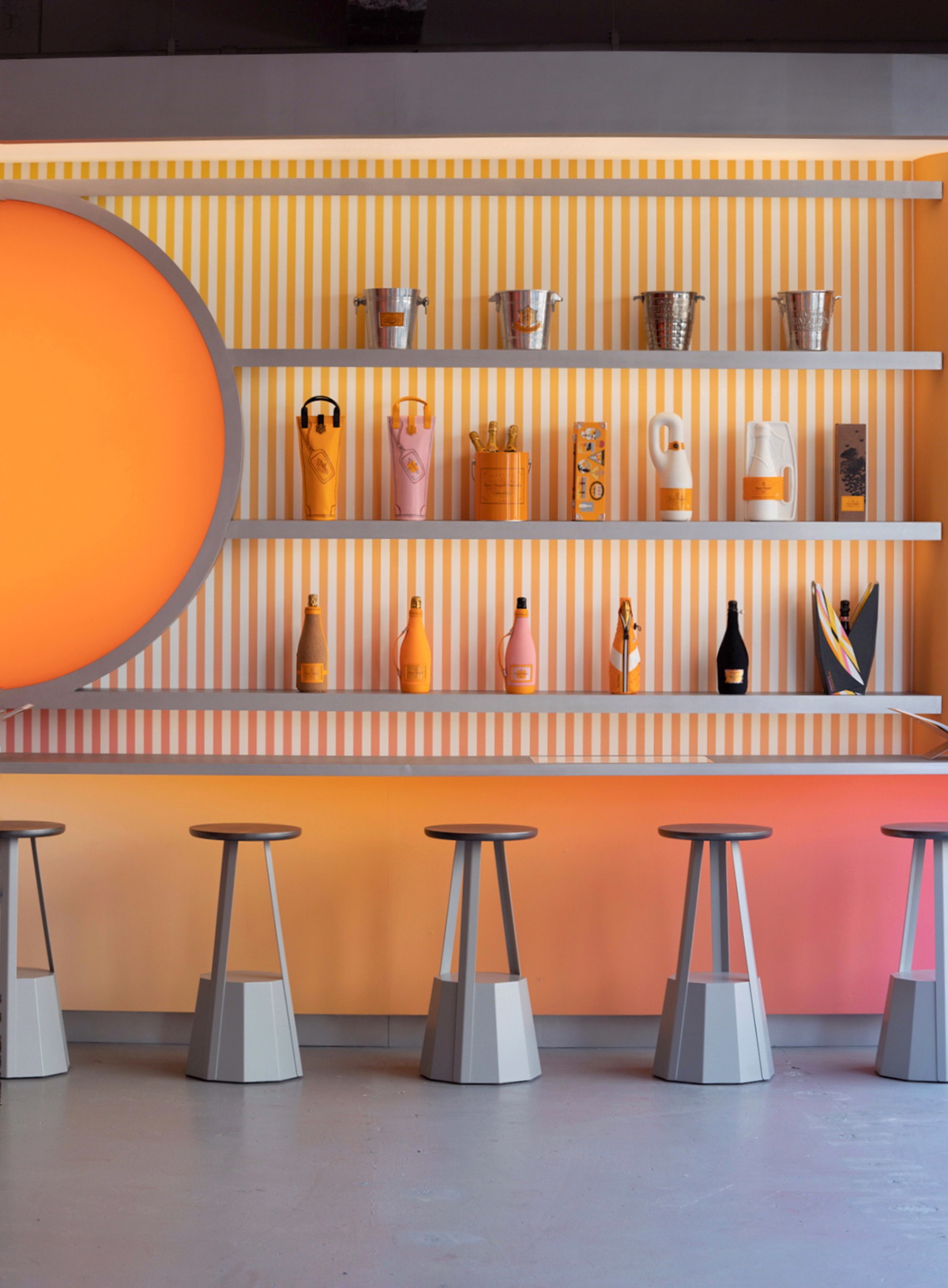
Display of Veuve Clicquot’s iconic designs through the years. Courtesy of Veuve Clicquot
What has changed? I would say that when you are so linked with the contemporary and the people around you, you also have to be very curious and try to evolve. So an example is right here: you have the very first ice jacket made by Veuve Clicquot. This first one was made 20 years ago out of diving costumes, but the ones we make now are made by the Saint Martins School of Business of 100% recycled plastic and this mono-material approach uses on average 30% less material than regular production. You can look at things we made 20 years ago and think, yes, this is nice, but we must continue to innovate, to respond to the times and move forward. Every single box that we make now in Veuve Clicquot is made out of 50% recycled paper and 50% hemp (not the hemp that people smoke!).
What we want to show here is that we have some duties to the world we live in. Not everyone is aware of the need for these things, so as a major brand we can help to act as an exemplar. This is what I am hoping to build with my team.
LUX: Your champagnes are offered at a range of price points. How do you balance keeping its luxurious and exclusive reputation whilst also ensuring it is accessible to a wider audience?
Follow LUX on Instagram: luxthemagazine
JMG: I have been working for 34 years in the luxury world. I worked at companies like Louis Vuitton, Cartier, Fendi, wonderful luxury names, and I know that luxury, for some people, means something that is not easy to get or seems unapproachable.
I don’t agree with that viewpoint at all. We have a collection of products, starting with the iconic yellow label, Brut, which is the most famous bottle of Veuve Clicquot, then you go to La Grande Dame which is at a much higher price point. Both of them however, embody the spirit of Clicquot, so it’s not a matter of price, it’s a matter of how desirable your brand is and how much you have built around the brand.
Take an exhibition like this, running for 3 weeks in the heart of central London. Some people in this area are on their way to very nice upmarket restaurants, and some are on their way to Tesco. Both will pass the exhibition, they will see these artists and learn about Madam Clicquot’s story, and then they will understand the dream, the spirit and the history of Veuve Clicquot.
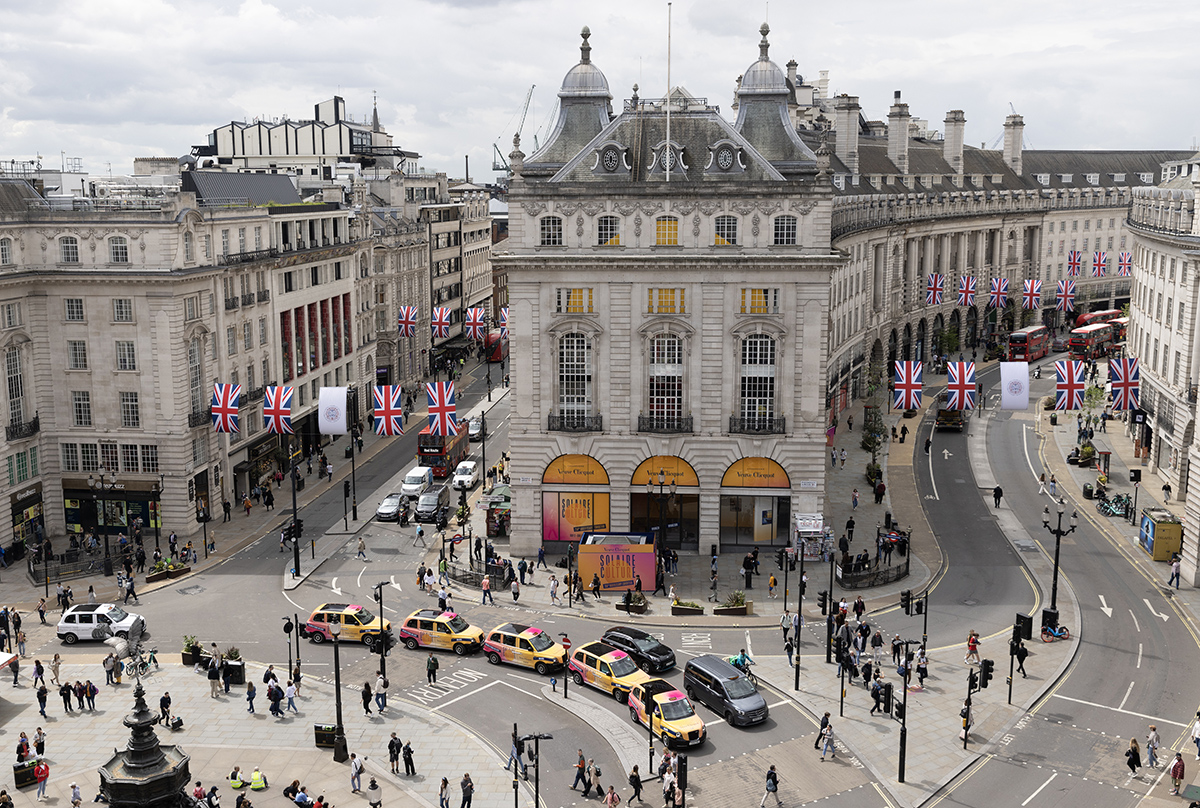
Outside the Veuve Clicquot exhibition in Picadilly Square. Courtesy of Veuve Clicquot
LUX: Can you tell us about the importance of art and the art world to Veuve Clicquot?
JMG: Actually, we are not really in the art world; I would say that we are in the design world. Design is not art, it is the way of making a beautiful object which is also functional, or building something beautiful around an object. When you sell bottles of champagne you have to build something really extraordinary. We love the beauty of objects and we believe that in champagne, since you have something precious inside the bottle, you have to make the outside of the bottle exciting as well. So we constantly are looking for the next idea, and there is no set recipe. It has to be a surprise, because more than anything else, we love the element of surprise.
LUX: Beyond this all female exhibition, Veuve Clicquot has many initiatives supporting gender equality, including supporting women entrepreneurs through your Bold Woman Award. Can you tell us more about this aspect of the brand?
JMG: This is the spirit of Veuve Clicquot. Fifty-one years ago one of my predecessors thought, what can we do for the 200 year anniversary of Maison Clicquot? They had an incredible inspiration and vision and said, why don’t we celebrate the spirit of woman entrepreneurs, why don’t we shine light on some inspiring women?
What we found out through running the Bold Woman Award was that for women there are many social barriers standing in the way of them running their own company or being independent. Veuve Clicquot is trying to fight against this because we believe there should be as many women entrepreneurs as men entrepreneurs.
The statistic is the following: 92% of women entrepreneurs believe and admit that they would love to have a role model, and only 15% of them can name one off the top of their head. We want to change this and help to inspire women. The first very inspiring woman entrepreneur was Madame Clicquot, and for the last 220 or 230 years, there have been many more women entrepreneurs that we want to shine a light on. It’s about sharing, inspiring and making the world more balanced between men and women.
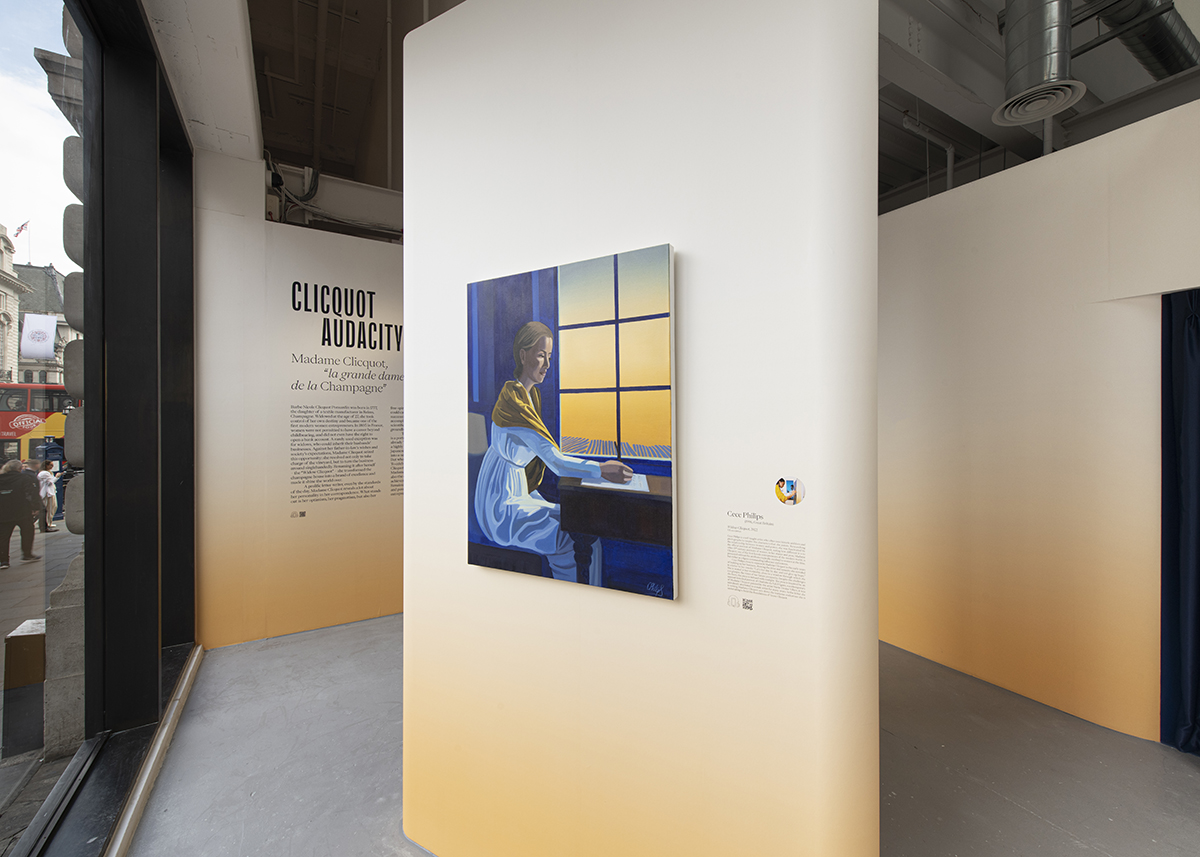
Cece Phillips, Window Clicquot, 2022.Courtesy of Veuve Clicquot
LUX: What is Madame Clicquot’s story and why is it so important to the brand?
JMG: You are in 1805 in France, in a very traditional, even noble family. You have faced a lot of challenges because twenty years ago was the French Revolution. You have a very nice husband who you love and a very severe and traditional father in law. Then you become a window overnight. Imagine: you basically don’t exist anymore. What are your options?
You could find another husband, but instead you say “no, I’m going to take over the company. I’m going to run the company.” Everyone tells you not to, starting with your father-in-law. He says you are not capable of it, you cannot do it, you will not succeed at it. So, you are stuck.
If I had to describe Madame Clicquot, I would say she was incredibly courageous, incredibly audacious and took huge risks. She teaches us that if you want to do something, just go for it. Never surrender.
LUX: The artworks that are on show here are reimagined portraits of Madame Clicquot. Can you tell me a little bit more about which ones are your favourite, and which one you think speaks to the values of Veuve Clicquot?
JMG: I have to say that I have a love for the Cece Phillips portrait in particular. You have the whole story there. You have a young woman sitting at her table, you see the vineyards through the window, you see that she is studying, very focussed but also very determined. She was writing a lot at the time, writing ideas, writing about the company. She was not travelling, but she was sending letters to all the customers around the world. This and the light, the vibrant, sunny appearance of it all, this is Clicquot.
I have to say, the portrait we have of Clicquot was taken when she was 84 years old and she looks a little bit severe! With all do respect to 80-year-old women, this was maybe not Madame Clicquot at her strongest period of life. Cece Phillips gets it all in one painting, you have the whole story in one, so it’s better than words.
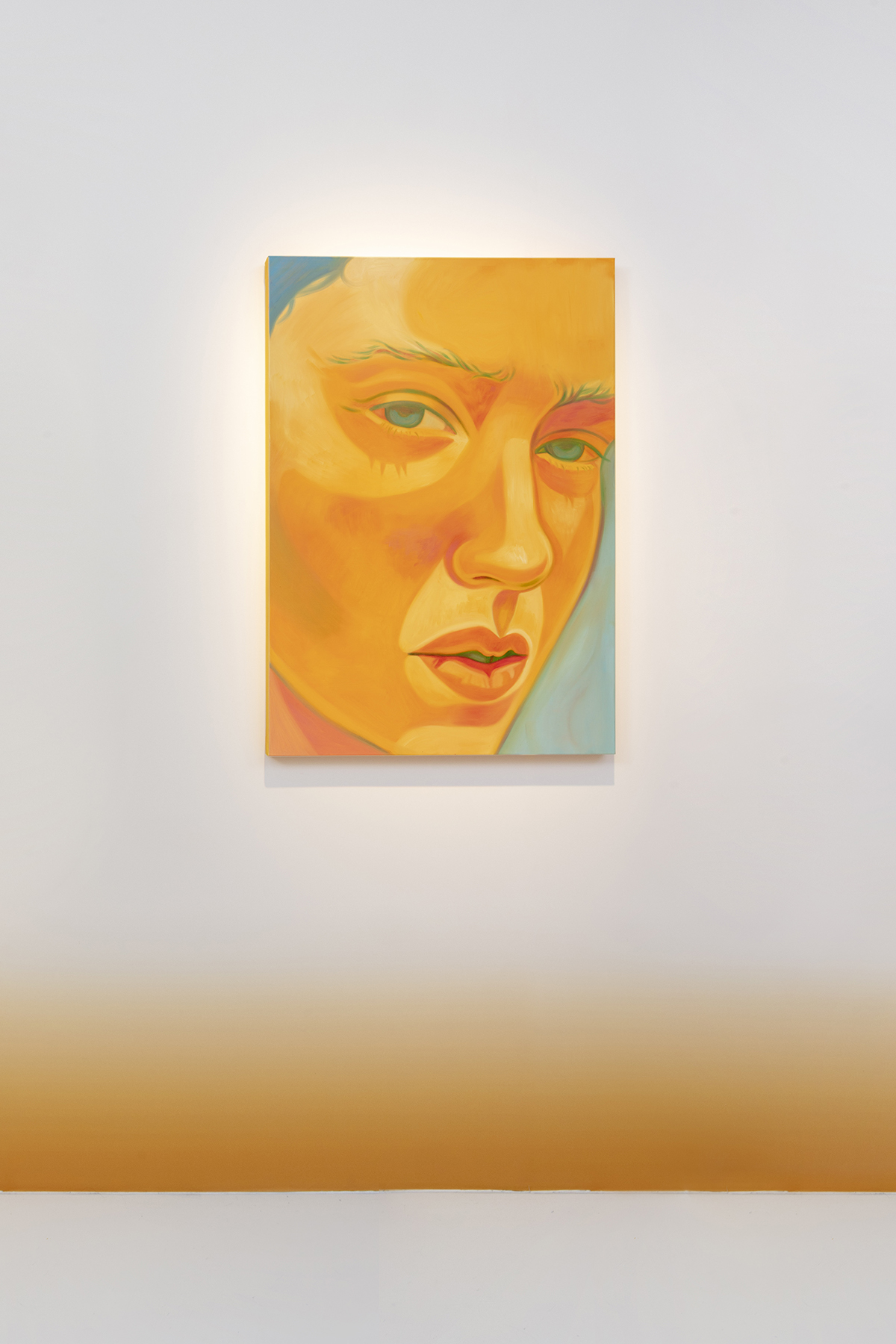
Ines Longevial, Ghost Guest, 2022. Courtesy of Veuve Clicquot
LUX: Beyond the artworks, what else interests you about the exhibition?
JMG: The statue of Yayoi Kusama is pretty impressive, but my favourite piece today here in London, which is not really in touch with the exhibition itself; it is the Sunny Side Cafe. I love it because this is actually when Clicquot meets British tradition and British culture.
LUX: The exhibition has been in Tokyo, Los Angeles, and now London. Where is next?
JMG: We started in Tokyo in June last year, and then we did three weeks in Los Angeles, and now it’s three weeks in London. Next year, we might go somewhere else, perhaps a continent we have not been to yet, perhaps South Africa.
LUX: What was the decision-making process behind choosing these three cities?
JMG: These are the three most important market places for Veuve Clicquot. I loved the idea of being in Tokyo because Japanese people are so refined. Then we went to the US and we didn’t want to go to New York because we thought we were going to be lost, and we love the vibes of LA so we went there. When we went to Europe we didn’t look for France – can you imagine me, a French guy, saying that! – but we decided to take it to London.
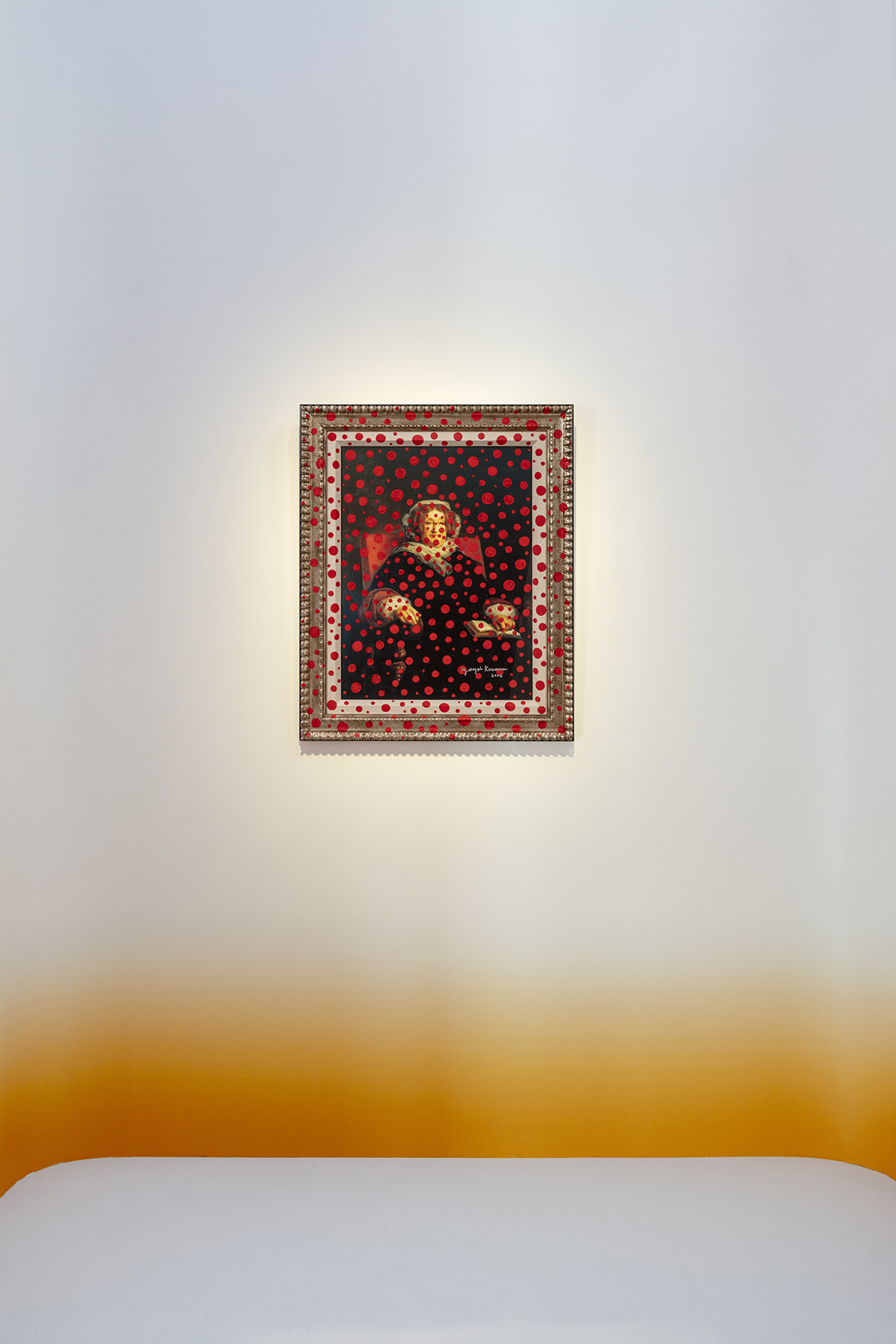
Yayoi Kusama, Twist with Madam Clicquot! Courtesy of Veuve Clicquot
LUX: Would you take it to France and if not why?
JMG: No, for a few reasons, actually. First we love to speak about our brand outside of our own country, and second because the UK is very important to us, and also because there are some legal constraints in France which wouldn’t allow us to make such an impression in an exhibition like we have here.
LUX: You have a lot of tradition and history behind you. In today’s market, with the younger generation coming up, what do you think are the key changes and the key ways that you’re going to have to adapt as a brand to appeal to these younger consumers?
JMG: We are a luxury maison, and I’m a strong believer that luxury is about what you offer rather than just marketing fast-moving consumer goods. We talked about how to surprise people, how to make people dream and feel that they are getting something that they are really inspired by. My point is that if we keep on being ourselves, being super creative and bringing excitement, I think that we can offer things that people will discover and appreciate, even if they are not tailored to their tastes.
Read more: Visual art and music meet in Shezad Dawood’s latest exhibition
If we start to do it the other way round and try to anticipate what it is that people expect, what they want or think they need, we lose our spirit and our soul. Of course, we need to listen to the younger generation, look at what they do, and how they behave to a certain extent. However, I don’t want to be obsessed with creating something that people will expect.
Find out more: solaireculture.veuveclicquot.com








